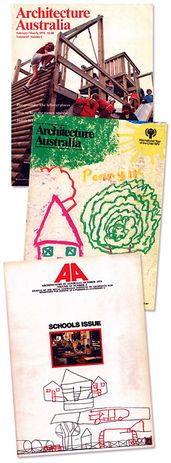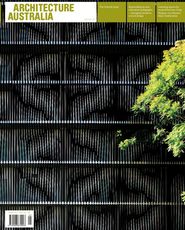
So, how does one decide which projects to include in an issue of a magazine, which ideas to ponder and who to do the pondering? This is always tricky – there is always more good work than there is space to publish it – but for a theme issue it is even harder. As we were putting together “The Schools Issue” more and more interesting work came to light, and I was aware of an increasing number of possible writers. Many private schools are commissioning and building fine works of architecture (often accommodating facilities far superior to those available to the wider community), but there is also a great deal of interesting work going on in the public sector. Budgets here are mostly meagre, and outcomes less glamorous, but the pedagogical ideas being pursued are well worth exploring. Research into learning environments has also gained impetus in recent years and there is much to report. All of this adds up to a lot of very publishable work – the issue could easily be four times the size and still not cover all the significant activity in the field. But, as always, a limited number of pages are available, and fascinating projects continue to come to light after the magazine is full.
How, then, to proceed? It is important, I think, to understand any one issue of the magazine as part of the sequence of publications. A magazine is an incremental, cumulative thing – the knowledge presented is built up over an array of individual issues (in the case of Architecture Australia it is an accumulation of over 100 years of publications). So, any one issue is part of a network – at once drawing on and referring to past issues and projecting forward to future ones.
The Schools Issue is not a book on school design. It need not – and cannot – be comprehensive. But it can index a greater body of work going on in Australia at this particular moment, it can raise education and pedagogy as important and interesting sites of architectural investigation and it can help set the scene for further thinking. We are unlikely to publish another issue devoted solely to schools in the immediate future, but we can feed more school work into forthcoming general issues to keep the discussion going. (We will also endeavour to build on the housing issue of Architecture Australia published in May.) This issue also reminds us of the important role schools played in architectural culture in the 1970s – the last issue of Architecture Australia devoted to the topic was October 1974. It seems we are now entering a period of similar architectural vigour and engagement I had hoped to recall some of the fascinating history of school work by highlighting unbuilt schools from the seventies through the Radar Unbuilt series. However, despite numerous enquiries I could not find any unbuilt schools – the closest we got was Don Watson’s suggestion of the half-built IB74 system. It seemed as if all the interesting schools designed at this time were built. Then, of course, I found something once it was too late to get it into this issue. In the spirit of the incremental accumulation of ideas I hope to include it in the next.
Which brings me to unbuilt work and the present. By the time you read this, the deadline for this year’s AA Prize for Unbuilt work will be upon you – 17 September. Pull out those unbuilt gems and enter!
Justine Clark, editor Architecture Australia.















